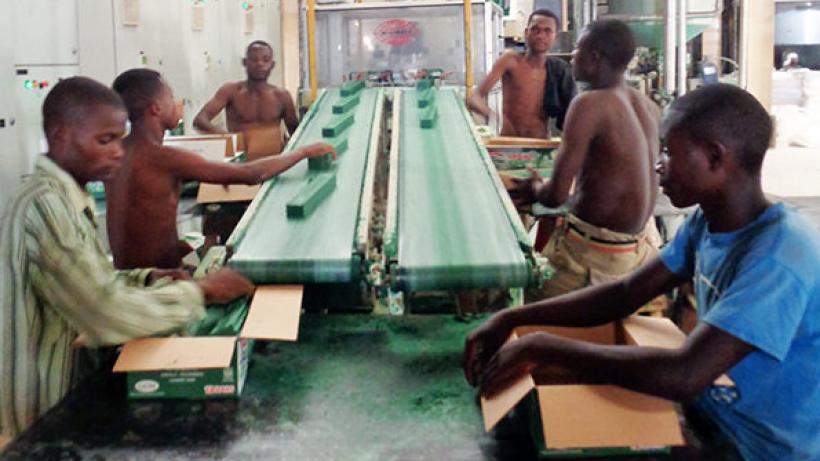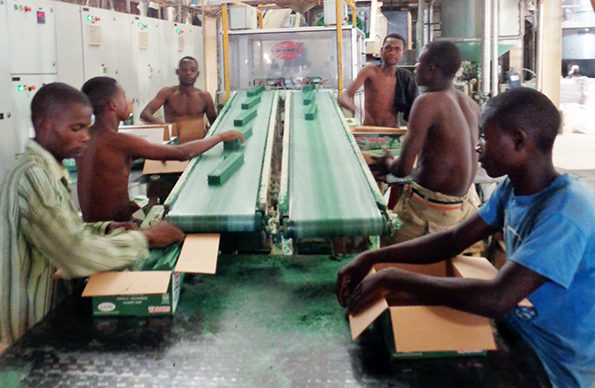
Public-private pacts in poultry and cotton for economic transformation in Mozambique
Promoting structural transformation and economic growth through public-private collaboration is key for development. While there is no shortage of economic transformation strategies, many have not been effectively implemented. Most strategies are general and multisectoral, and thus fail to address important sector-specific constraints. Additionally, failure to effectively integrate the private sector in policy design and implementation often leads to poor results.
Most examples of successful industrial policies illustrate the importance of an effective dialogue between the state and the private sector, the build-up of trust, and the ability to make mutual credible commitments (Te Velde 2013, ACET 2014).
For a long time, the predominant advice to developing country governments was to focus on high-level public-private dialogue as the basis for business environment reforms. While important, it may not be sufficient in the presence of binding sector-specific barriers. The high-level constraints discussed usually involve complex political economy issues, which could redirect attention away from sector-specific barriers that may be easier to fix. One of the main aims of public-private dialogue is to reduce policy uncertainty and create trust so that the private sector feels confident to increase investments, while policymakers profit from information which will allow improvements in policy design. It may be easier to build such bridges around sector-specific objectives. As pointed out by Whitfield and Buur (2014), sector-level predictability and credible commitment can occur even when the overall business environment is poor.
From dialogue to pacts
The government of Mozambique approached the IGC to examine the poultry and cotton sectors and identify opportunities for public-private interactions that could bring about innovation and growth.
The main recommendation from the IGC’s work is that the government should aim to negotiate sector-specific “pacts” with relevant private sector stakeholders. Through these pacts, the government commits to resolving specific constraints, through targeted public investments or policy initiatives, including regulatory reforms. The private sector, in turn, commits to specific investments in capacity expansion, productivity improvements, or technological upgrading.[1] Such pacts could boost investment and growth by creating clarity and certainty around feasible reforms.
The main recommendation from the IGC’s work is that the government should aim to negotiate sector-specific “pacts” with relevant private sector stakeholders.
The pacts may function as signalling mechanisms, showing that the government is committed to a specific sector. This signal, in turn, could not only help firms get access to finance, knowledge, and other important drivers of firm growth, but more importantly, could stimulate entrepreneurs to invest in these markets.
An important, and possibly critical, caveat: such pacts will not be consistent with the public interest if they undermine competition. Public-private agreements based exclusively on protectionist measures or those favoring incumbents at the expense of entrants are not, in principle, welfare-improving. The two agribusiness value chains that we focused on in Mozambique – poultry and cotton – have demonstrable potential for significant expansion on a competitive basis without artificial barriers.
The Mozambican poultry and cotton sectors differ in many important ways – poultry is an import-substitution sector, while cotton is export-oriented, and they have very different capacity utilisation rates. The formal slaughterhouses producing frozen chicken are operating at, or even beyond, their installed capacity. The cotton gins, on the other hand, have been operating at less than 40% capacity utilisation for lack of raw material, which increases their unit cost. Farmers achieve very low yields and are simply not producing enough cotton at the prices that can be paid by the ginning companies, considering international market conditions.
The pacts, therefore, would take very different forms and reflect the nature of the specific constraints identified in each sector. In poultry, for instance, the private sector would commit to increase processing capacity, while in cotton, the ginners would expand investments in input and technical assistance packages for cotton farmers to increase productivity. In each case, the government would then commit to specific reforms that could maximise returns to these private sector investments. While the details are different, we uncovered broader themes that are highly relevant in both value chains.
Regulatory clarity
Regulatory clarity on sector-specific issues is key for firm-level investment and growth. In the case of poultry production, current regulations are not clear on, for instance, whether brining (the injection of a mixture of salt and water) is allowed. Brining alters the taste and texture of the meat but also increases the weight, reducing the production cost per kilogram. It is allowed within legislated limits in South Africa, the economic powerhouse of the Southern African Development Community Free Trade Area and the origin of a substantial part of Mozambique´s chicken imports. Not allowing Mozambican chicken producers to apply the same technology would place local production at a disadvantage vis-à-vis imports. Because it has an impact on slaugtherhouse design, the uncertainty could also discourage further investments in slaughterhouses.
In cotton, regulatory clarity is needed regarding the organisation of the whole sector. In Mozambique, cotton production has been organised in a concession model, with cotton ginners awarded specific geographical concessions. Within a concession, the ginner is the sole buyer, but is also responsible for providing inputs and technical assistance to the cotton farmers. A minimum price is established each year in discussions involving the government, the ginners, and the cotton farmers. In 2008, the government approved a document indicating that the sector should move towards liberalisation within seven years. Since then, there has been no official communication to clarify whether liberalisation has been abandoned indefinitely, or if it is still in the cards for the short- to medium-term. Uncertainty over the future of the organisational model does not incentivise further investments by incumbents or entrants. In fact, experience seems to indicate that in sub-Saharan Africa, the concession model is a superior alternative.
Looking at the entire value chain
The analyses from IGC research reveal the importance of considering the entire value chain in formulating an effective approach to reform and transformation. Feed costs represent up to 60% of chicken production costs, and about 40% of that is accounted for by soybean meal. Brazil´s competitiveness in poultry production can be largely traced to its soy boom starting in the 1960s. The most valuable product was the soy oil, but its extraction resulted in large quantities of soybean meal, which was then sold to the animal feed industry. The soybean meal, essentially a by-product, was cheaper than the actual soybeans. In Mozambique, however, soy production emerged on the back of demand for poultry feed, while there is no strong market for the soy oil. As a result, the soybean meal is actually more expensive than the soybeans. With a more vibrant value chain for other soy-based products and a market still to be developed, the price of the meal could go down, making poultry production more competitive.
A similar dynamic is present in the cotton sector. In this case, the main objective of production is the fibre that is then turned into cotton lint in the gins. However, the cottonseed that is left can be crushed and used for the production of various by-products, with cottonseed oil being the most important. In many cotton-producing countries, the seed represents 20% of the value of the cotton crop. In Mozambique, however, it makes up only 10%, again as a result of an underdeveloped market. By promoting the consumption of cottonseed oil and other by-products through coordinated public and private initiatives, the value of cotton would increase. This would allow ginners to pay a higher price to farmers, thus generating additional production, increasing the ginners´ capacity utilisation, lowering their unit costs, and allowing for better farmer prices. This virtuous cycle would create further opportunities for productivity-enhancing investments.
 Cotton oil processing in Mozambique.
Cotton oil processing in Mozambique.
Customs administration
A common barrier facing these and other sectors is the lack of effective customs administration. Mozambique officially has a poultry import quota, but our study found that it is not being adequately enforced. We found a large discrepancy between Mozambique’s official poultry import figures and export figures declared by its trade partners[2]. Actual imports appear to be at least twice as large as those that are officially declared. In other words, smuggling seems rampant.
Imported palm oil is a cheap (and less healthy) alternative to soybean and cottonseed oil. The import tariff on refined palm oil is much higher than the import tariff on crude oil, to stimulate domestic refining. However, we find that 96% of palm oil exported to Mozambique by Southeast Asian countries is registered as refined oil, while in Mozambique, 99% of palm oil imported from those same countries is registered as crude oil, therefore paying the lower import tariff. Importers are systematically misrepresenting the nature of their imports, with adverse consequences for both border tax collections, and more importantly, the development of the cotton sector, on which nearly 200,000 farmers directly depend.
The use of trade policy as part of industrial policies has merits and drawbacks and is a hotly debated issue, but less controversial is the importance of establishing clear rules and enforceable policy measures. Most important is to ensure that domestic production is not affected by negative protection and illegal activities, or by policies and regulations that fail to level the playing field for domestic producers. By not managing to effectively enforce trade policy measures, Mozambique is depriving itself of a potentially useful industrial policy tool.
While efforts to address high-level cross-sectoral constraints are vital, our work in Mozambique has identified the importance of designing public-private pacts at the sectoral level. With a clear and feasible agenda that can solve specific constraints and generate trust, commitment, and policy certainty, government can commit to implementing targeted sectoral reforms while the private sector commits to capacity-enhancing and productivity-increasing investments.
These pacts would serve as the basis for a more effective and long-term collaboration between the state and the private sector, thereby promoting the economic transformation of Mozambique.
References
ACET (2014). African Economic Transformation Report. African Center for Economic Transformation.
Te Velde, D.W. (2013). State-Business Relations and Industrial Policy: Current Policy and Research Debates. DFID-ESRC Growth Research Program.
Whitfield, L. and L. Buur (2014). The Politics of Industrial Policy: Ruling Elites and their Alliances. Third World Quarterly, Vol. 35, No. 1, pp. 126-144.
[1] The IGC studies make detailed proposals for such pacts.
[2] The most important data source used in this analysis is UN COMTRADE

